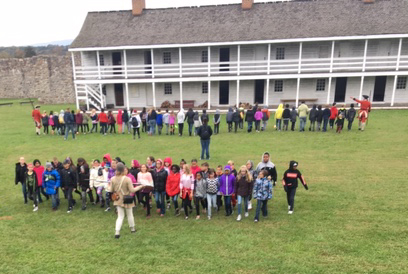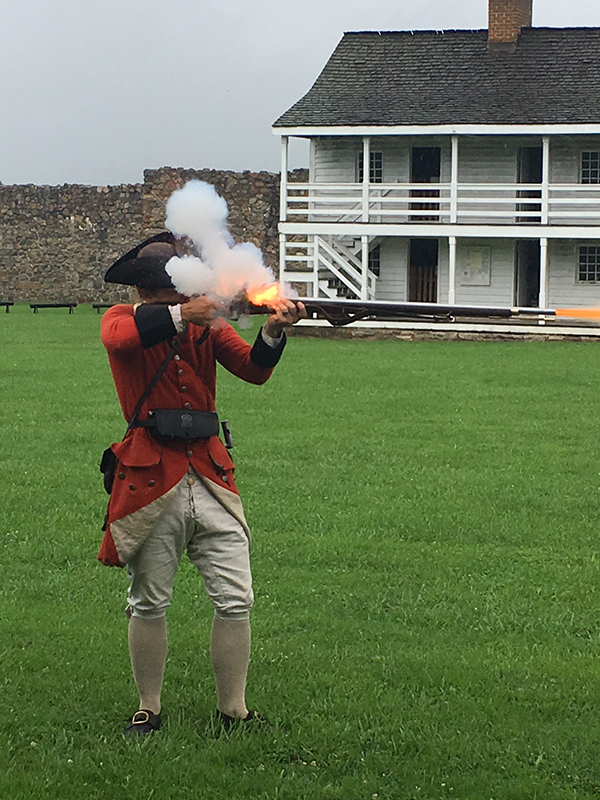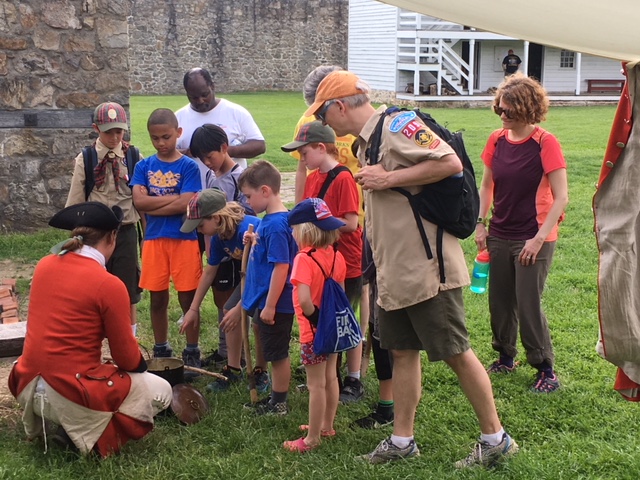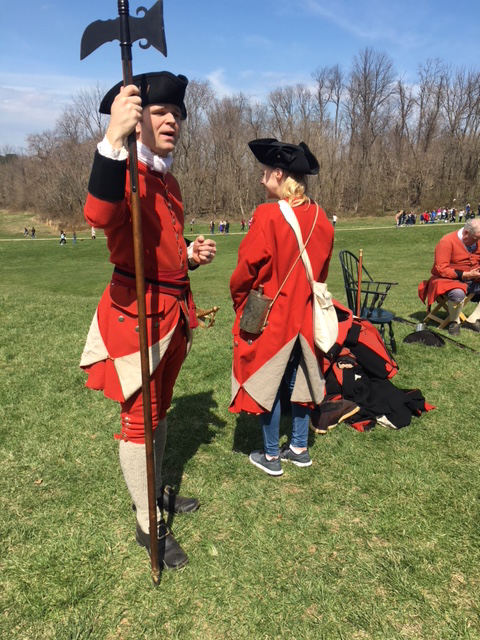 Fort Frederick State Park offers educational field trips that focus of the history of Fort Frederick and the daily lives of those who served here.
Fort Frederick State Park offers educational field trips that focus of the history of Fort Frederick and the daily lives of those who served here.
Duration: one and a half to two hours
Time: Tours typically begin at 10:00 a.m.
Days offered: Typically Wednesday through Friday during the months of May, September and October.
NOTE: Tours MUST be scheduled at least six weeks in advance to assure staffing will be available to meet your group’s needs.
Fee Scale:
$15 reservation fee is required
Number of students and cost
10-20—$60 20-30—$80 30-40—$100 40-50—$125 50-60—$150
60-70—$175 70-80—$200 80-90—$225 90-100—$250 Over 100—$350
Chaperones and teachers are free.
- Adults groups require the $15 reservation fee and $4 per person
What an Educational Experience consists of:
Greeting and Orientation to the Fort (10 minutes): Learn about Fort Frederick and its uses. Why and when was the fort built? What are the buildings in the fort and its three unique features? Who were the soldiers of Fort Frederick and how was the fort defended? What other uses did it have after the French and Indian War, including the American Revolution, American Civil War and Great Depression/Civilian Conservation Corps/Park?
Barracks Life (20 minutes): What was the daily life of the enlisted soldiers at Fort Frederick from 1756 to 1759? Discover how many men were held in the barracks and what the barracks were used for in a soldier’s daily routine. Learn how people in the 18th century viewed space and privacy compared to today. See and touch the types of food the soldiers ate and learn how they cooked. Gain a better understanding of how and why food was stored and/or preserved the way it was. Learn about the soldier’s health and hygiene practices as well as the order and cleanliness of the barracks.
 Musket Firing Demonstration (20 minutes) [Technology]: The primary weapon of the 18th century army was the musket and all soldiers understood the basics of this scientific technology lock stock and barrel. Students will learn and see firsthand how “the queen of the battlefield” operates.
Musket Firing Demonstration (20 minutes) [Technology]: The primary weapon of the 18th century army was the musket and all soldiers understood the basics of this scientific technology lock stock and barrel. Students will learn and see firsthand how “the queen of the battlefield” operates.
Military Drill (20 minutes): Students will learn the basics of 18th century military drill as new recruits starting with how to stand, how to face, how to march and how to wheel. They will also learn why close order drill, bright uniforms, large flags and field music were important in the 18th Century army.
Explore the Fort (20 minutes): Classes will looking around and explore the fort with teachers and chaperones.
- Groups with more than sixty students will have more stations and will choose from the following. For every class beyond three you get another station.
Cherokee at Fort Frederick (20 minutes): Understand the Anglo-Cherokee relations at Fort Frederick and in Maryland during the French and Indian War. Learn the background of native relations leading up the conflict, Maryland’s pre-planning for alliance, Cherokee warriors coming to Fort Frederick and the treaty ceremony and gift giving that took place. What did Maryland ask for in return and how did the alliance pay off?
Medicine of the 18th Century [Science]: Gain a better understanding of medical science at Fort Frederick during the French and Indian War. Learn about the role of Dr. Heinzman and the fort's hospital as well as a background of surgeons in the 18th century. Learn about the principal uses of medicine and details on surgical procedures through the use of visual aids and possibly hands on experience. Learn the good and bad of medical treatments in the 18th century and how many are still practiced today.
 Fort Frederick in the Revolution: Understand the fort’s role in the American Revolution. Learn about its condition in 1777. Who were the American guards and who were the British prisoners? Discover what the conditions were for the prisoners.
Fort Frederick in the Revolution: Understand the fort’s role in the American Revolution. Learn about its condition in 1777. Who were the American guards and who were the British prisoners? Discover what the conditions were for the prisoners.
Fort Frederick in the Civil War: Learn the roles Fort Frederick played during the Civil War including the Williams family occupation of the property, why the fort was or was not important and what both sides wanted. Hear the stories of skirmishes and artillery at the fort December 1861 and January 1862, as well as how the fort, though not significant, was involved in the major campaigns of 1862, 1863 and 1864 in MD and PA.
“Sundry People”: Many non-military people helped make Fort Frederick function. Learn about these folks and receive a hands-on experience based on the person or persons being discussed.
 Fort Construction [Math]: Governor Sharpe said, “…all our Men being raw & undisciplined & all our Officers ignorant of everything that relates to Fortifications or Places of Defence…” Meaning that an engineer was needed to oversee the fort’s construction, and as none were available, he would have to oversee the fort's building. Students will learn how the fort was built.
Fort Construction [Math]: Governor Sharpe said, “…all our Men being raw & undisciplined & all our Officers ignorant of everything that relates to Fortifications or Places of Defence…” Meaning that an engineer was needed to oversee the fort’s construction, and as none were available, he would have to oversee the fort's building. Students will learn how the fort was built.
Artillery Drill [Math]: Several six-pound cannons were used to defend the fort in the 1750s. Learn about how these “Dogs of War” work and how to handle tools and run drill with us on an actual cannon. (Non-firing)
Lunch: Can/will be a station to allow larger groups to get to all the stations.
Park Store: To purchases souvenirs.
Nature Activity: Park Ranger Led hike or nature activity; TBD based on staffing.
To inquire about an Educational Field Trip please fill out this Google Form.